21. Three Hundred Tons of Nails
1200 tradesmen built Waiouru Army Camp in only 11
months.
October
1939
War has been declared. The government purchases
Waiouru sheep station for territorial defence. It wants a
central military base strategically sited out of range of
enemy ships but with quick road or rail access to all of
the North Island’s harbours and coastlines.
December
1939
The
Public
Works Department is ordered to build barracks at
Waiouru to house two battalions for territorial
defence. On the 2nd of June 1940 this order is
increased to buildings for training seven
battalions of expeditionary
forces.
200
Public
Works Dept engineers arrive at Waiouru. They survey
the swampy site with the Waiouru Stream flowing
through the middle of it, then begin removing the
swamp with land-scrapers and replacing it with sand
and gravel.
Each
day they bring hundreds of tons of building
materials to the site from the Waiouru railway
station, unloading everything by hand.
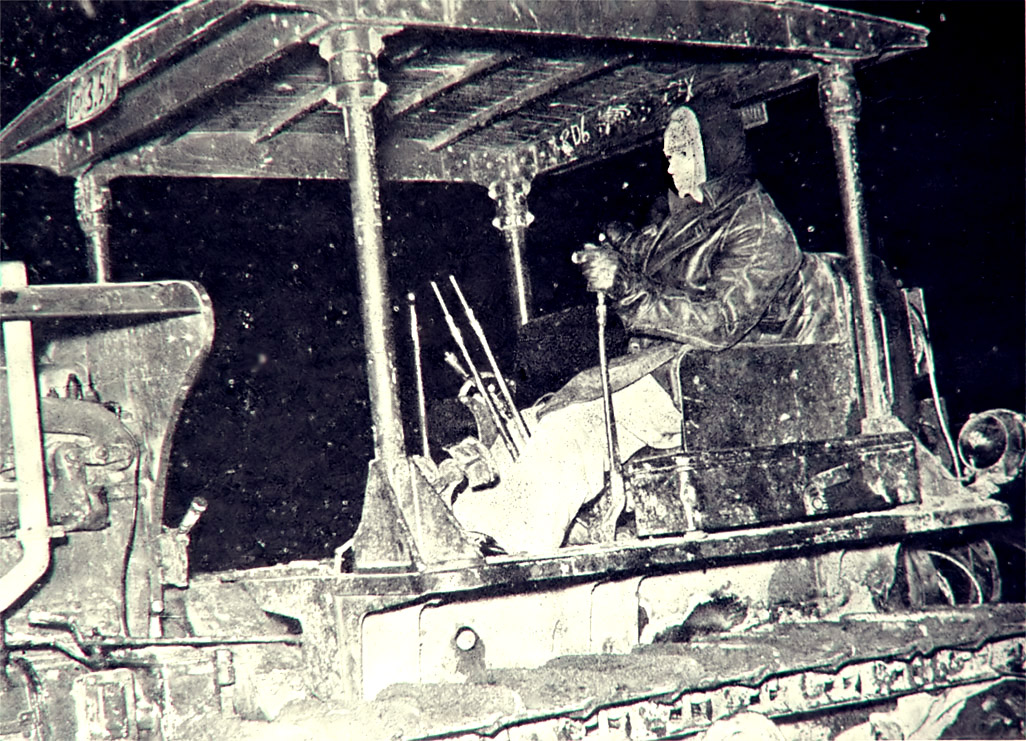

1st
July 1940
Another 800 men working for private building
contractors begin
erecting the first of the new buildings. Some
workers are accommodated
in the artillery’s 20 barrack buildings built a
couple of years previously, but 600 of
them are sleeping
in the army’s bell tents ( in mid-winter, in
Waiouru ! ) This is a great incentive to get
more weatherproof barrack rooms erected ASAP.
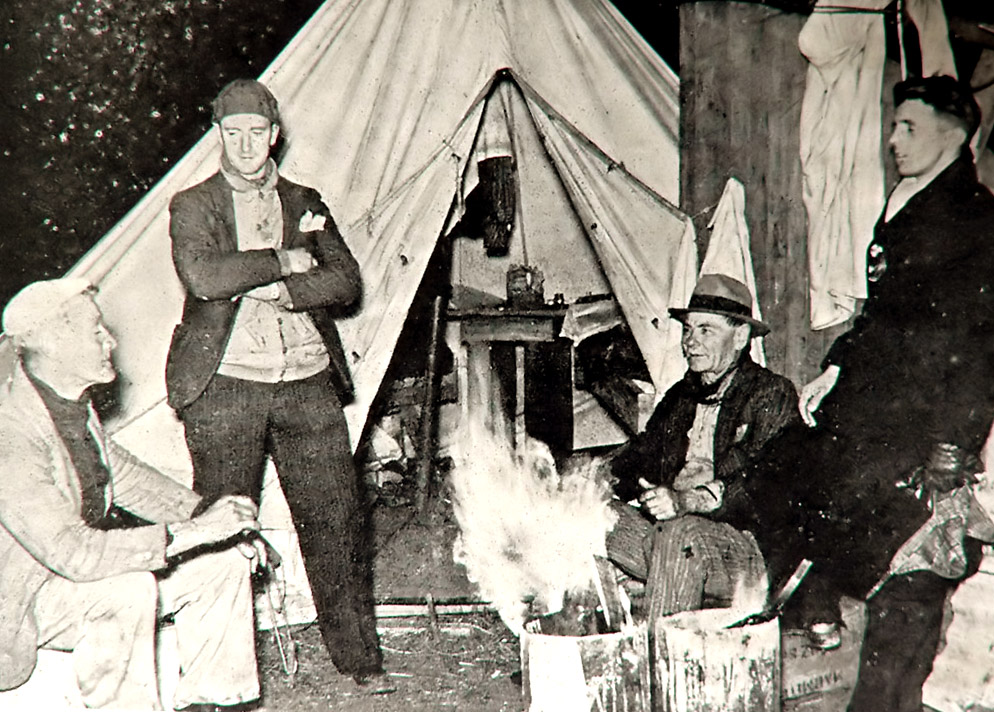
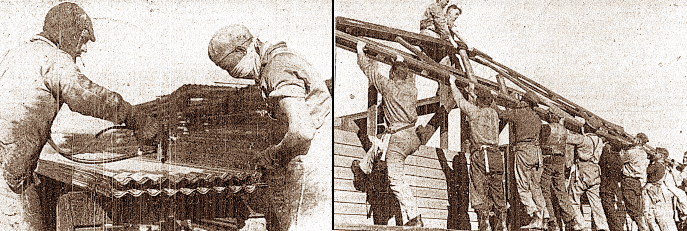
The work goes on 20 hours a day, in two 10-hour
shifts. At night the work is lit by dozens of kerosene
flares. The camp resounds with the banging of hundreds
of carpenters’ hammers and the roar of the 70
motor-trucks and 35 bulldozers, carry-alls and diggers
that are constantly on the move.Further afield, dozens
of gangs of other men are upgrading the narrow,
winding roads from Taihape, Turangi and Ohakune to
military standard. All the old wooden trestle bridges
on these roads are being replaced with heavy-duty
concrete ones.
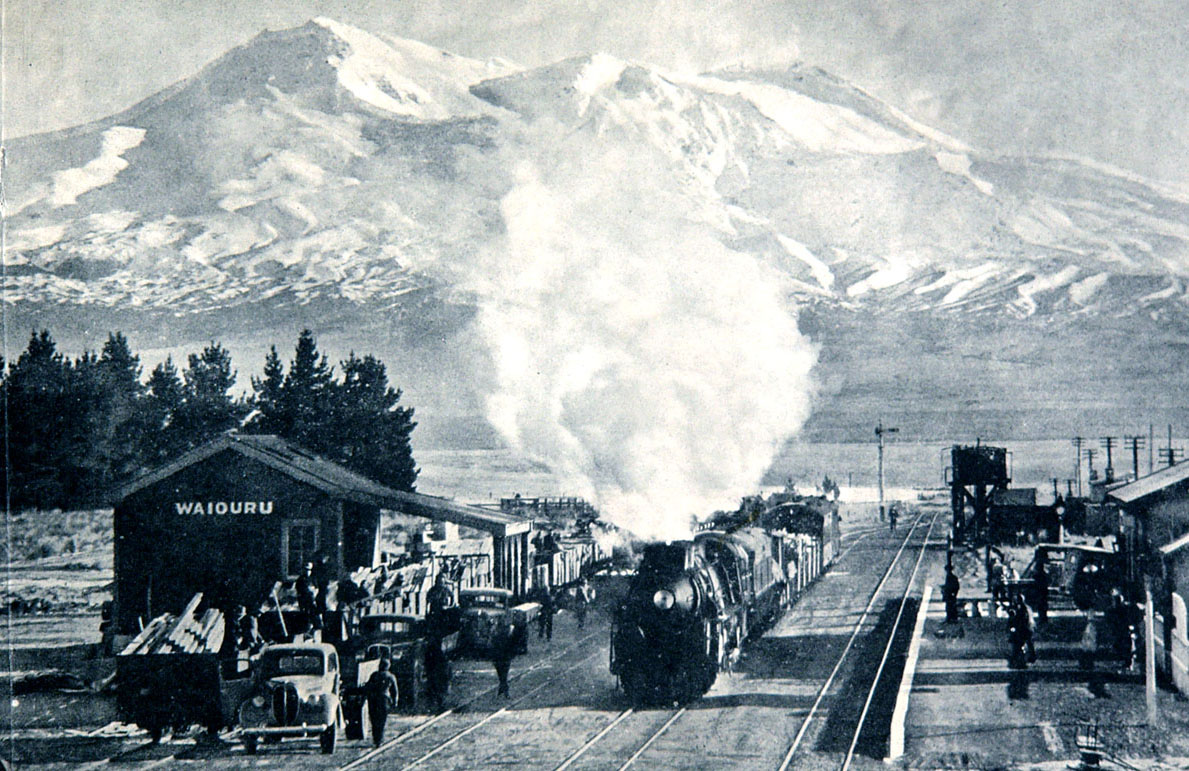
1st
August 1940
25,000
tons
of building materials are now on site. The
workmen have completed 40 buildings in their
first 30 days. They move into them as each one
is finished. Work continues on removing muddy
topsoil and filling swamps. A huge mound is
growing (between
today’s
wash stand and the Sgt’s Mess)
as
130,000 tons of swampy earth is removed and
replaced by the same amount of drained volcanic
sand and gravel. Eventually 60 hectares of firm,
level land will be created to site more than 360
buildings. Excavators remove another 40,000 tons
of soil to make a trench that diverts the
Waiouru stream around the camp site.
September 1940
An 180,000 litre reservoir is taking shape on what
will become known as Tank Hill. Two dams are being
built to feed it. 9 km of water mains are being
laid to distribute the water, and similar lengths
of stormwater and sewerage pipes. There are now
1,200 workers on site.
The First Echelon of 2NZEF arrive for
field training, sleeping under canvas in the snow.
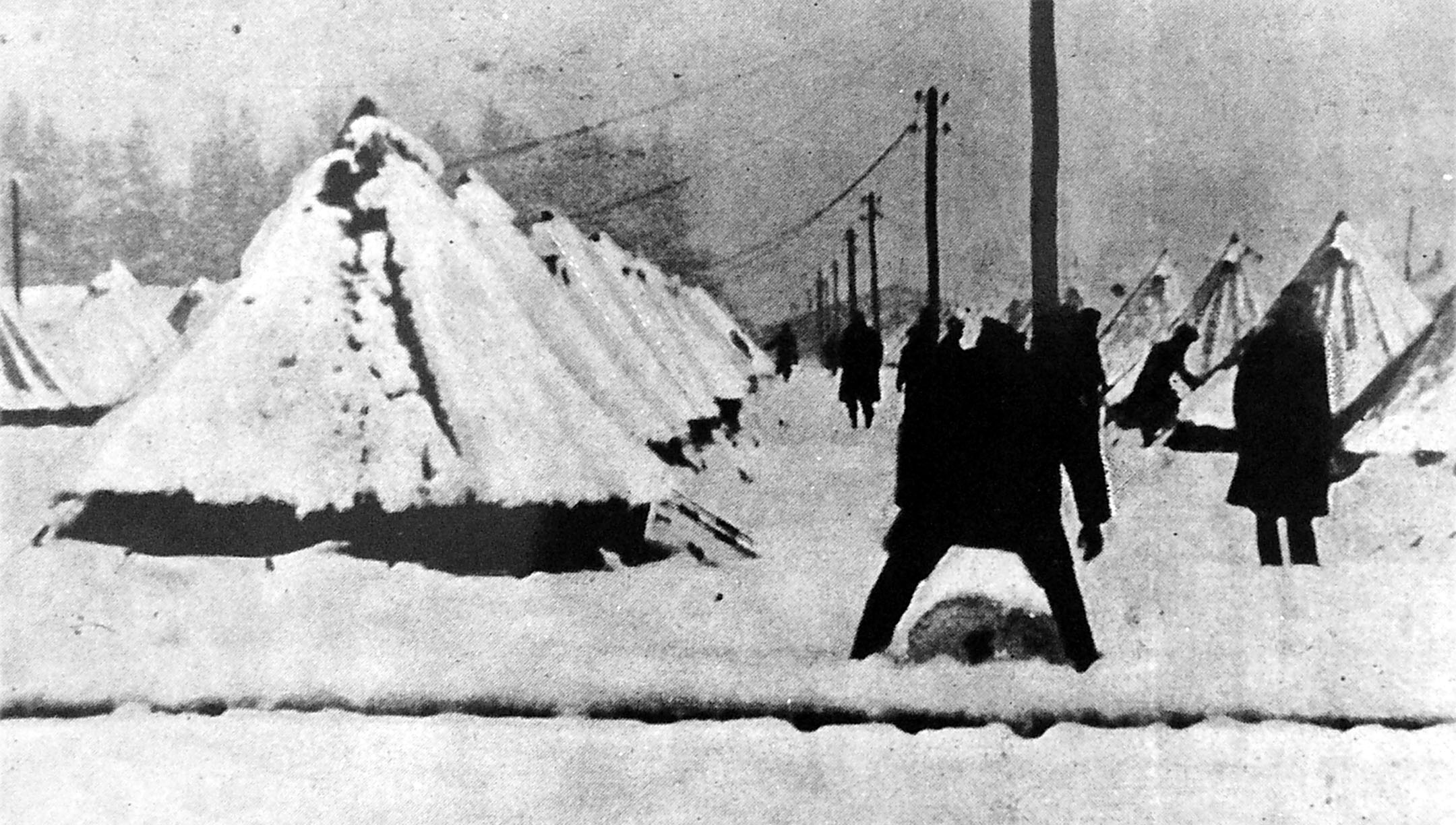
October
1940
140
km of copper power cables have been strung up on 560 power
poles. The camp has been connected to the national grid
and the builders are now working under floodlights. A 550
KW diesel generating plant has also being installed should
the national grid be taken out by enemy action. From Tank
Hill we can see five bridges, 22 kilometres of streets and
40 km of gravel roads under construction in and around the
camp.
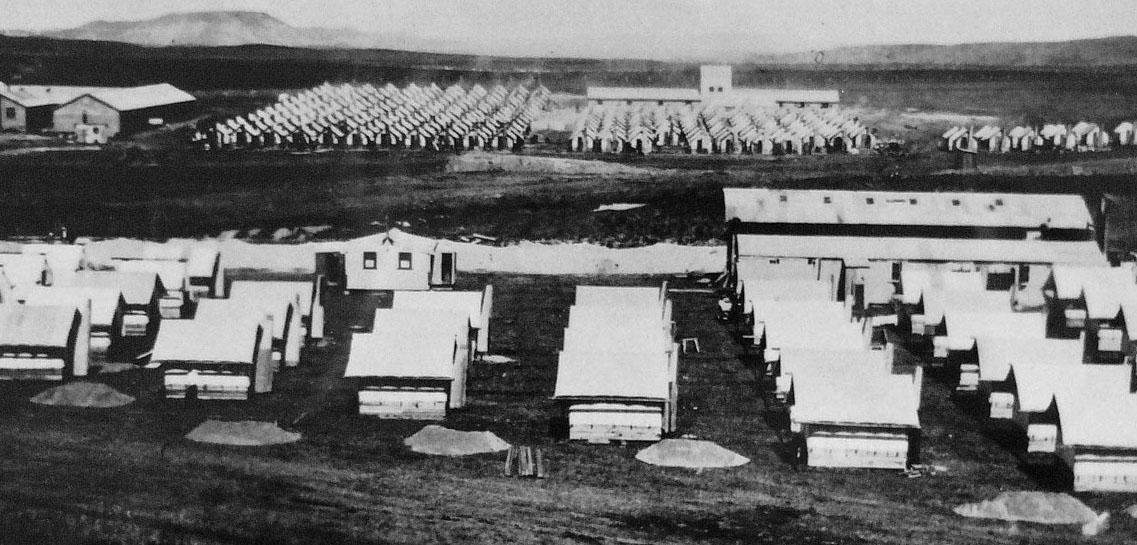
Wooden
PWD huts behind contractor’s’ tents (with
chimneys).
November
1940
The
workers
move from the barrack buildings to portable huts
sited just north of the camp. The
1st Field Regt NZ Arty arrive from
Rotorua. A branch railway line from Waiouru
Station to the quartermaster’s stores is
completed.
January 1941.
6 months
after starting, the workers have now completed their
240th building.
The
2nd Battalion
Hawkes Bay Regiment, 2nd
Battalion Wellington Regiment and 3rd
Battalion Auckland Regiment, as well as the
12th Field
Regiment NZ Arty arrive at the camp. There
are now over 7600 men in the camp, including 600
construction workers finishing off buildings,
tidying up, sealing parade grounds, erecting fences
and sowing grass-seed. Many of the soldiers
still have to sleep in bell tents (with electric
light and wooden floors), but facilities for cooking
and eating meals, for washing clothes, shaving,
showering, toileting and for recreation are superb.
There are hundreds of hot-water taps, scores of
flush toilets.
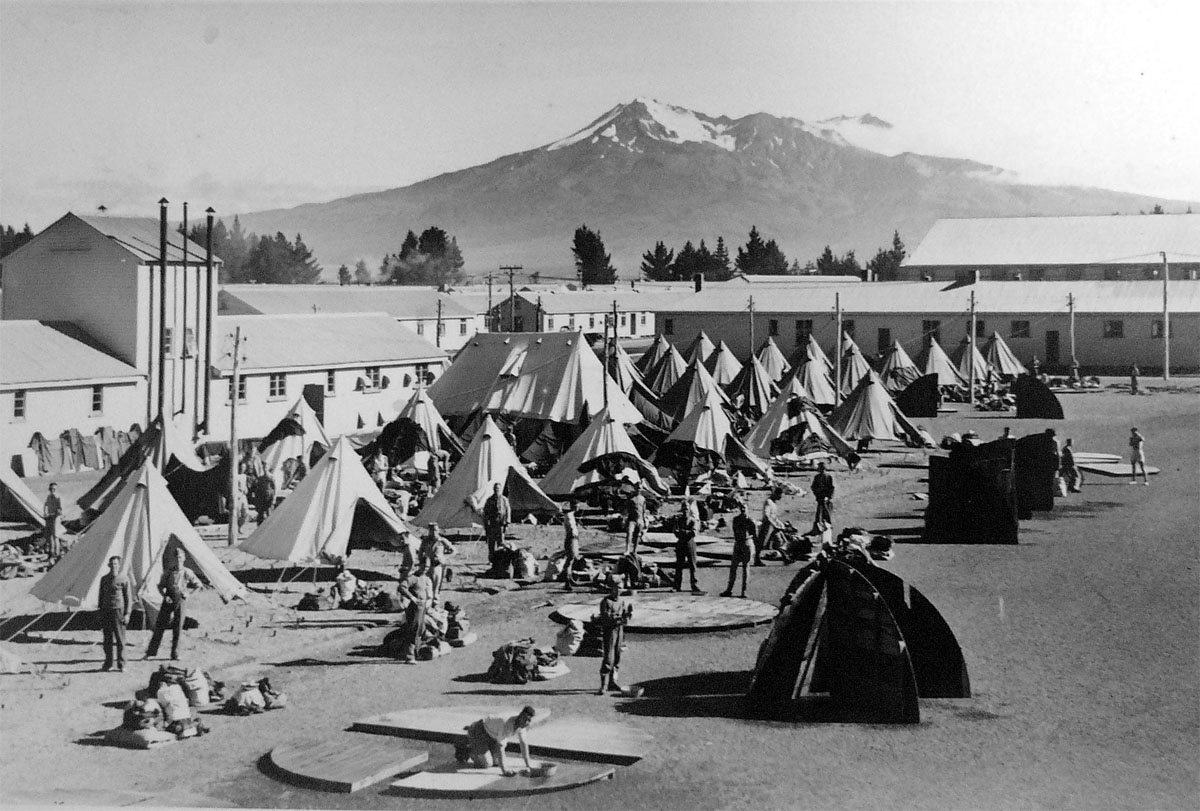
Feb
1941
The
1st Mounted Rifle Brigade arrives,
with 1500 horses. The horses are quartered in
lines near the present day Naval radio
transmitters. But by April the climate has
become too cold for many of them and in their
confined conditions 500 develop strangles, a
bacterial throat infection. They are moved
north by train to Ngaruawahia Camp.
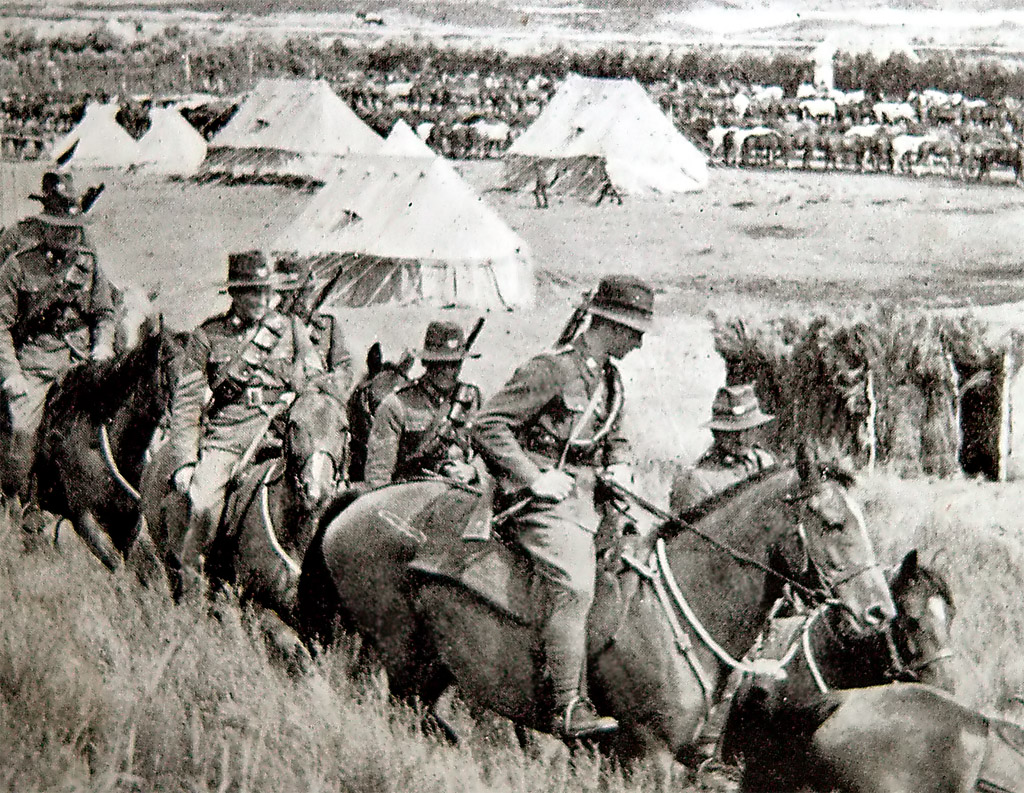
May 1941
The
camp
is finished. As well as barrack buildings for the
battalions and the camp HQ, there are two rifle
ranges, 30 explosives magazines, a motor garage, a
100-bed hospital, a dental clinic, a nurses home, a
1000-seat picture theatre, a fire station and five
recreation Huts, each with a café, lounge, library,
billiard saloon, concert hall and letter-writing
room.
But there are no bars. Most of the soldiers are
17-year olds, and the drinking age is 21. The camp is
dry. So the boys write letters instead: approximately
60,000 sheets of paper and 30,000 envelopes are issued
over one three-day period.
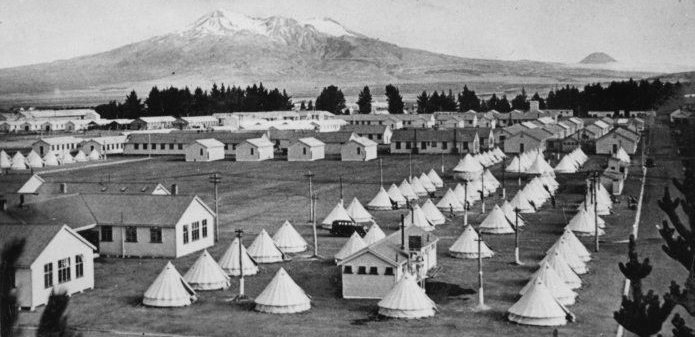
Every day the camp bakery with gigantic twin ovens is
turning out thousands of loaves and the butchery is
cutting up tons of meat, while warehouses at the end
of the railway siding are distributing dry foodstuffs,
clothing, ammunition, petrol, coal and
thousand-and-one other commodities. Opposite them,
near the main gate, is the guard house, with cells and
a prophylactic building nearby, for soldiers who have
over-indulged in various ways while on leave.
The only
inadequacy is Waiouru’s tiny post and telegraph
office, which has to deal with letters, parcels,
telegrams, toll calls and savings accounts of 7000
soldiers (There were no courier vans, emails,
cellphones or eftpos cards then), and the PWD workers
are now completing a much bigger Post Office.
300,000
lengths of timber
50,000 sheets of galvanized iron
17,000 sheets of glass
1,600
rolls of tar-paper
and
300 tons of nails |
Winter 1941 - Feeding the Troops
All these active young men in the camp, more than 7000 of
them, need feeding. The catering staff has to provide
150,000 meals every week on a budget for food of £4300 a
week (the average weekly wage in New Zealand is about £4
for men and £2
for women).
Each week the men in the camp consume 12 tons of bread, 18
tons of potatoes, 20 tons of meat, 9 tons of vegetables,
20,000 litres of milk, 2 tons of cheese, 3 tons of jam, 3
tons of butter, 2 tons of flour, 2 tons of rolled oats and
680 kilos of tea leaves.
However there is some difficulty in turning good food into
good meals: there are many complaints at first, the
regular force soldiers appointed to do the cooking do not
have the experience of preparing such large volumes of
food. The Territorial regiments provide their own cooks,
and some, but not all, were up to standard. An army school
of cookery is set up to remedy matters, but still there
are complaints.
War Profiteers
Skilled cooks need plentiful supplies of top-quality food,
and in April 1941 an investigative reporter from “The
Truth” newspaper discovers that war profiteers in Auckland
had obtained a monopoly on re-selling fruit and
vegetables, and are exploiting the soldiers by charging
high prices. In the autumn of 1941 there are huge
surpluses of tomatoes and apples, but almost none get to
Waiouru. Instead the soldiers have to make do with tinned
fruit from Australia.
There are paddocks full of cabbages and caulifowers just
down the road from Waiouru. But the monopolists are buying
them all and taking them by rail in non-refrigerated
wagons to the market at Auckland, before they are sold at
a big mark-up and brought back, well past their best, to
Waiouru.
But conditions in Waiouru are better than in Australian
camps. An army instructor who had been posted to several
Australian camps spoke of having no hot water, primitive
latrines, sleeping on mattresses on the floor, and only
limited quantities of food. “ When I came to Waiouru, I
thought I was in a first-class hotel,” he reported.
Source
Croom, F.G. 1941, The History of the Waiouru Military
Camp.
(typed manuscript - Waiouru Museum library)
|











